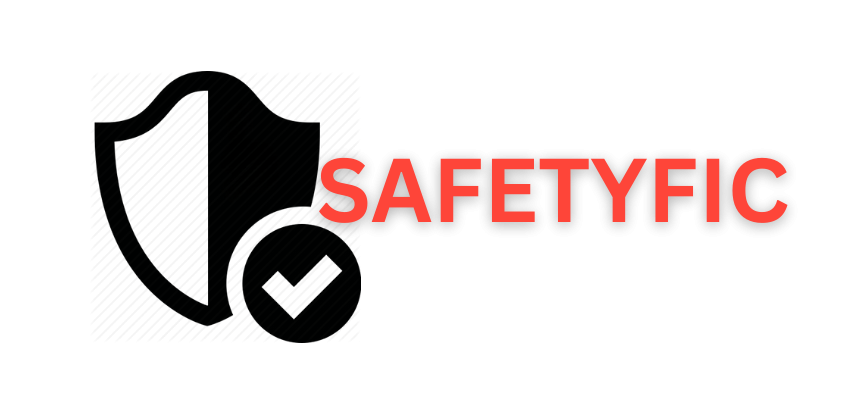A leaning cinder block wall can be both an eyesore and a potential safety hazard if left unaddressed. Over time, factors such as soil movement, water damage, or poor construction can cause the wall to shift or tilt. Fortunately, with the right tools and techniques, it’s possible to straighten the wall and restore its structural integrity. This guide will walk you through how to straighten a leaning cinder block wall, assess the severity of the damage, and implement effective solutions to fix the problem.
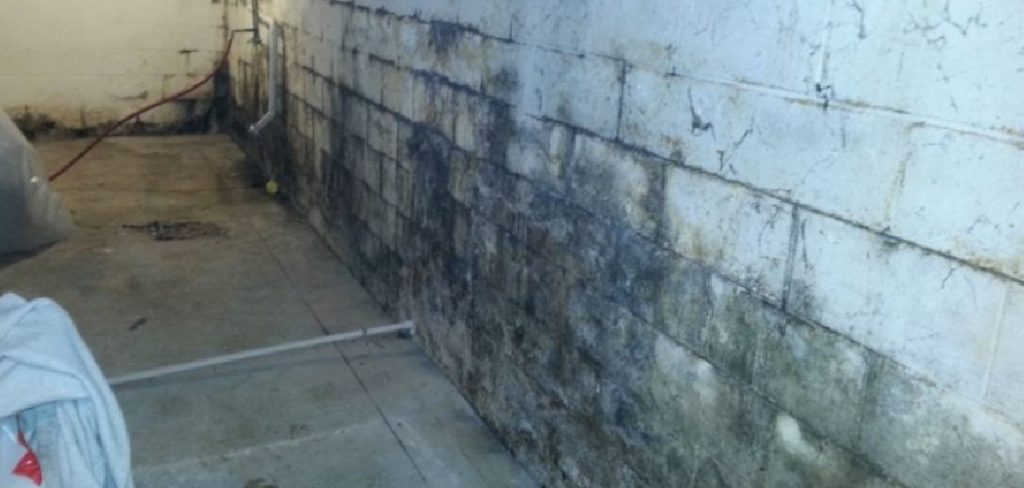
Causes of a Leaning Cinder Block Wall
Understanding the reasons behind a leaning cinder block wall is vital for determining the best course of action to repair it. Some of the most common causes include:
- Poor Drainage: Excess water accumulation near the base of the wall due to poor drainage can lead to soil erosion or increased hydrostatic pressure, causing the wall to tilt or shift over time.
- Foundation Issues: Weak or improperly laid foundations can fail to support the weight of the wall, resulting in gradual leaning.
- Expansive Soil: Clay-based soils that expand and contract with moisture levels can create uneven pressure on the wall, leading to structural instability.
- Structural Overloads: Adding excessive weight to the wall, such as heavy landscaping or large retaining loads, may exceed its capacity and cause it to lean.
- Tree Roots: Roots from nearby trees can grow underneath or alongside the wall, exerting pressure and contributing to its movement.
- Poor Construction: Improper installation, such as insufficient reinforcement or low-quality materials, can compromise the wall’s strength and stability.
By identifying the underlying cause, you can take the necessary steps to prevent the issue from worsening and choose the most appropriate repair solution.
Preparing for the Repair
Before attempting to straighten a leaning cinder block wall, it’s essential to prepare thoroughly to ensure a safe and effective repair process. Follow these steps to get started:
- Assess the Severity of the Lean
Use a level or plumb line to determine the degree of lean in the wall. This will help you understand the extent of the damage and whether professional assistance may be required. If the lean is severe or the wall shows signs of significant cracking or instability, consult a structural engineer for advice.
- Check for Underlying Causes
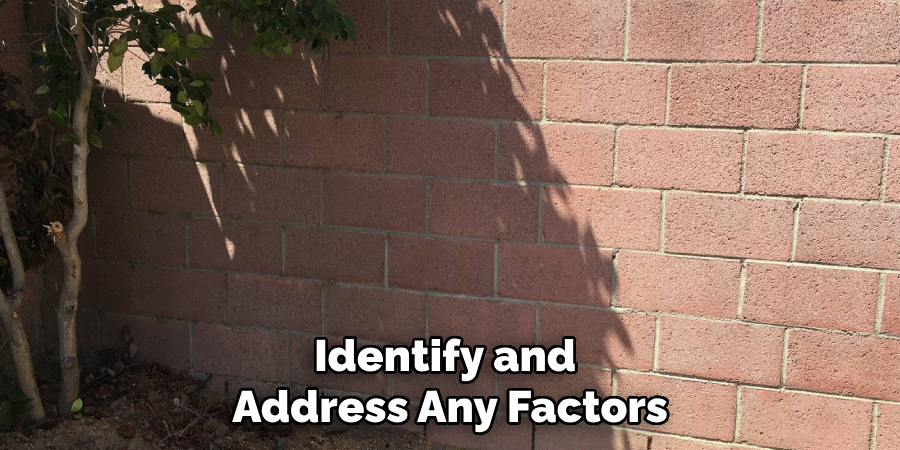
Identify and address any factors contributing to the leaning wall. For example, if poor drainage is the issue, plan to improve water management before proceeding with the repair. Similarly, if tree roots are causing pressure on the wall, consider removing the offending roots or relocating the tree where feasible.
- Gather Necessary Tools and Materials
Make a list of tools and materials you’ll need for the repair. Common items include a masonry hammer, chisel, concrete mix, rebar, wall anchors, adhesive, and a level. Ensure you have all the appropriate safety gear, such as gloves, goggles, and a dust mask.
- Clear the Work Area
Remove any obstructions near the wall, such as plants, furniture, or debris, to create a clean and safe workspace. This will also help you gain full access to inspect the wall and its foundation.
10 Methods How to Straighten a Leaning Cinder Block Wall
1. Assess the Cause of the Lean
Before attempting to straighten a leaning cinder block wall, it is important to first determine the cause of the lean. Common reasons include soil erosion, water damage, shifting foundations, or poor construction. Inspect the wall and surrounding area for any signs of water pooling, cracks in the foundation, or soil erosion at the base of the wall. By identifying the underlying issue, you can better understand what corrective measures are necessary and avoid just fixing the symptom without addressing the root cause.
2. Excavate and Reinforce the Foundation
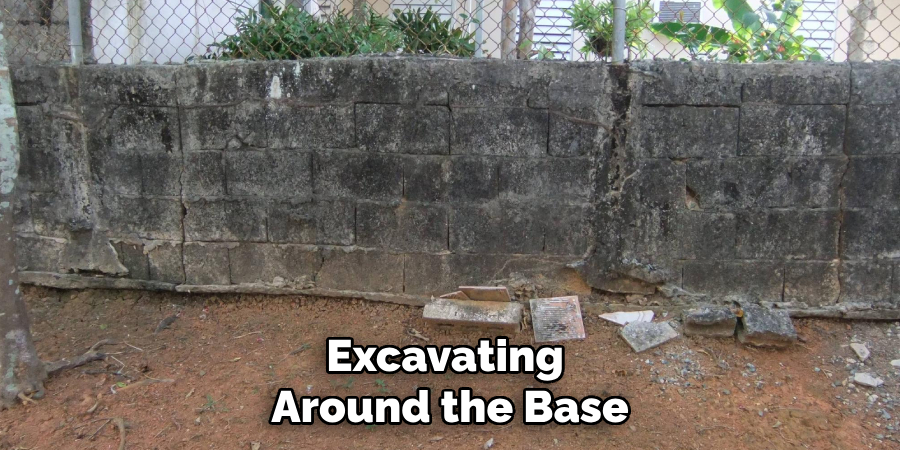
If the leaning wall is due to a shifting or weakened foundation, one of the most effective ways to straighten it is by excavating around the base of the wall and reinforcing the foundation. Use a shovel or excavator to remove dirt around the base of the wall, exposing the foundation. Once exposed, you can either add more concrete to reinforce the existing foundation or install additional support, such as piers or helical piles, to stabilize the wall.
3. Install Wall Anchors
Wall anchors are a common solution for straightening leaning walls, especially for retaining walls or walls that have been displaced by external pressure, such as soil or water. Wall anchors work by stabilizing the wall from behind, pulling it back into a more upright position. The installation process involves drilling holes through the wall and into the soil or foundation behind it, then inserting metal anchors and rods that can be tightened to gradually shift the wall back into place. Wall anchors are a reliable and effective method for both temporary and permanent stabilization of leaning walls.
4. Use a Hydraulic Lift or Jack
If the leaning wall is significant and the foundation or ground below it is still relatively stable, you may be able to lift the wall back into place using hydraulic jacks. Hydraulic lifting equipment can be used to raise the wall gently and slowly to a more upright position. Depending on the wall’s construction, the jacks can be placed underneath the wall or along the foundation to distribute the weight evenly while applying pressure to straighten the wall.
5. Add Retaining Structures
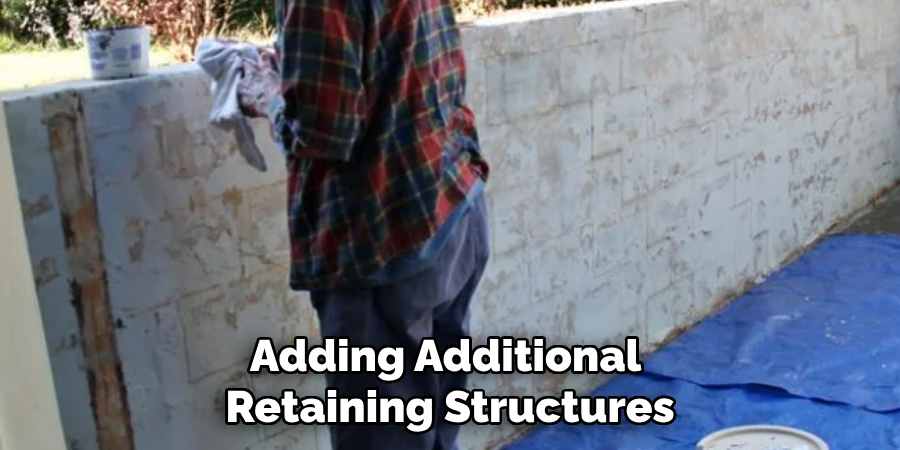
If the leaning wall is a retaining wall or is holding back soil or other materials, adding additional retaining structures may help to straighten it. A simple method is to install new retaining walls or braces along the backside of the leaning wall.
These structures will distribute the weight and pressure more evenly across the wall, reducing the force pushing it out of alignment. Concrete or timber braces can be placed at key points along the wall to give extra support and help keep it in position while the ground settles and the soil behind it is stabilized.
6. Rebuild the Wall Using a Sturdier Mortar Mix
In some cases, the leaning cinder block wall may be too damaged to simply straighten and may require rebuilding. If the wall has cracked, broken blocks, or weakened mortar, it may no longer be stable enough to hold the pressure.
The best option in this case is to dismantle the affected portion of the wall, replace damaged blocks, and rebuild it using a stronger mortar mix. Choose a high-quality mortar with a higher compressive strength to ensure that the new construction can better withstand external forces.
7. Install a Drainage System
A common cause of leaning cinder block walls, especially retaining walls, is water buildup behind the structure. When water collects, it exerts pressure on the wall, causing it to lean or even collapse. To address this issue, you should install a drainage system behind the wall to direct water away from the structure. This can include adding weep holes, drainage pipes, or a French drain system to divert water and reduce pressure.
8. Use Geogrid Reinforcement
Geogrid reinforcement is a method commonly used for stabilizing retaining walls that have begun to lean due to soil pressure. Geogrids are synthetic materials that are placed behind the wall and anchored into the soil, providing additional support to hold the wall upright. The grid material helps distribute the pressure of the soil and prevents further shifting. By installing geogrids and securing them into the ground behind the wall, you add a strong layer of support that can gradually help straighten and stabilize the structure.
9. Install Tiebacks or Deadmen
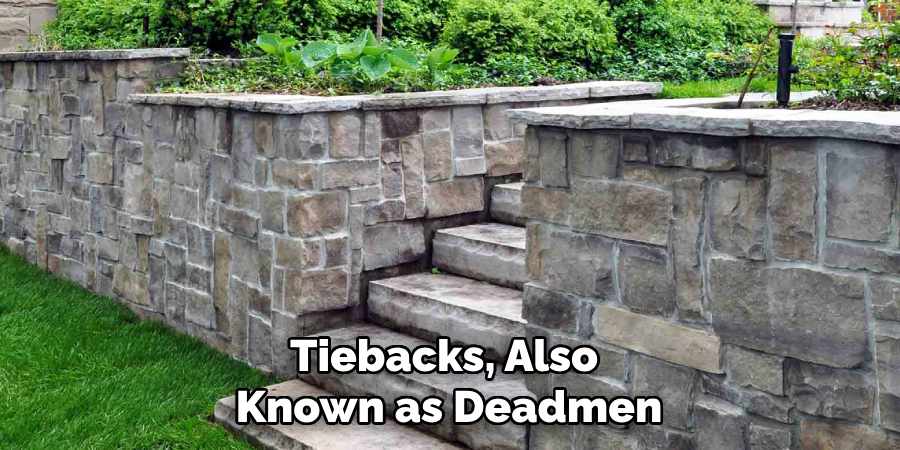
Tiebacks, also known as deadmen, are another structural solution for leaning cinder block walls. These are large, heavy anchors that are buried in the soil behind the wall. The tiebacks are connected to the wall with steel rods or cables, and as they are tightened, they pull the wall back into position. This method is commonly used for retaining walls and is particularly effective when the leaning wall is caused by soil pressure. Tiebacks provide significant structural reinforcement, and their installation can be done without the need to dismantle the entire wall, making it an efficient and effective solution.
10. Consult a Structural Engineer
If the leaning wall is particularly large, complex, or if the methods above are not effective, it may be necessary to consult a structural engineer. A professional can assess the underlying cause of the lean and provide a tailored solution based on the specific circumstances of your wall and property.
A structural engineer will be able to recommend the most appropriate method, whether it’s foundation repair, additional bracing, or a complete rebuild, and can ensure that the solution meets safety standards and addresses the root cause of the problem.
Conclusion
Leaning cinder block walls can pose both structural and safety risks if not addressed promptly. By identifying the root cause of the issue and choosing the appropriate solution, whether it involves reinforcement, drainage improvements, or rebuilding, you can restore the integrity of the wall and prevent further damage.
While some methods can be implemented as DIY projects, more complex cases may require the expertise of a professional to ensure long-term stability and compliance with safety standards. Thanks for reading, and we hope this has given you some inspiration on how to straighten a leaning cinder block wall!
About
Safety Fic is a distinguished figure in the world of Diy design, with a decade of expertise creating innovative and sustainable Diy solutions. His professional focus lies in merging traditional craftsmanship with modern manufacturing techniques, fostering designs that are both practical and environmentally conscious. As the author of diy, Safety Fic delves into the art and science of Safety Fic-making, inspiring artisans and industry professionals alike.
Education RMIT University
(Melbourne, Australia) Associate Degree in Design (Safety Fic) Focus on sustainable design, industry-driven projects, and practical craftsmanship. Gained hands-on experience with traditional and digital manufacturing tools, such as CAD and CNC software.
Nottingham Trent University
(United Kingdom) Bachelor’s in diyfastly.com and Product Design (Honors) Specialized in product design with a focus on blending creativity with production techniques. Participated in industry projects, working with companies like John Lewis and Vitsoe to gain real-world insights.
Publications and Impact
In diy, Safety Fic his insights on indoor design processes, materials, and strategies for efficient production. His writing bridges the gap between artisan knowledge and modern industry needs, making it a must-read for both budding designers and seasoned professionals.
